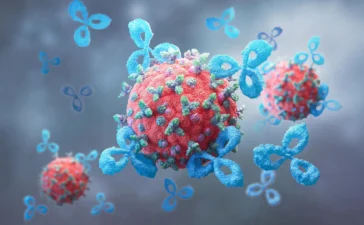Groundbreaking study reveals insights into Alzheimer’s disease mechanisms through novel hydrogel matrix
Researchers at the Terasaki Institute for Biomedical Innovation (TIBI) have unveiled a pioneering study shedding light on the intricate mechanisms underlying Alzheimer’s disease (AD). The study, titled “Effects of amyloid-β-mimicking peptide hydrogel matrix on neuronal progenitor cell phenotype,” represents a significant leap forward in understanding the interplay between amyloid-like structures and neuronal cells.
Led by Natashya Falcone and co-first authors Tess Grett Mathes and Mahsa Monirizad, the research team delved into the realm of self-assembling peptide-based hydrogels, renowned for their versatility in mimicking extracellular matrices (ECMs) of diverse microenvironments.
AD presents an intricate challenge in neurodegenerative research. Traditional two-dimensional (2D) models have limitations in capturing the complexity of the disease. Through their innovative approach, the team developed a multi-component hydrogel scaffold, named Col-HAMA-FF, designed to mimic the amyloid-beta (β) containing microenvironment associated with AD.
The study’s findings, published in a recent issue of Acta Biomaterialia, illuminate the formation of β-sheet structures within the hydrogel matrix, mimicking the nanostructures of amyloid-β proteins. By culturing healthy neuronal progenitor cells (NPCs) within this amyloid-mimicking environment and comparing results to those in a natural-mimicking matrix, the researchers observed elevated levels of neuroinflammation and apoptosis markers. This suggests a significant impact of amyloid-like structures on NPC phenotypes and behaviors.
Dr. Ali Khademhosseini, the study’s corresponding author, expressed excitement about the implications of their findings: “This foundational work provides a promising scaffold for future investigations into AD mechanisms and drug testing. By bridging the gap between 3D hydrogel models and the complex reality of AD pathological nanostructures, we aim to understand this interaction on healthy neuronal cells so that we can accelerate the development of effective therapeutic strategies.”
The study represents a crucial step towards unraveling the mysteries of the b-amyloid-like environment which can be found in AD and marks a milestone in the quest for innovative solutions to combat neurodegenerative disorders.
You Might Also Like
Eating more vitamin C can physically change your skin
Scientists at the University of Otago, Faculty of Medicine -- Christchurch Ōtautahi, have identified a direct connection between how much...
MIT scientists strip cancer of its sugar shield
A research team from MIT and Stanford University has developed a new technique designed to push the immune system to...
This “mushroom” is not a fungus, it’s a bizarre plant that breaks all the rules
In the damp shade beneath moss-covered trees, high in the mountains of Taiwan and mainland Japan or deep within the...
A quantum mystery that stumped scientists for decades is solved
A global research team led by Rice University physicist Pengcheng Dai has verified the presence of emergent photons and fractionalized...









